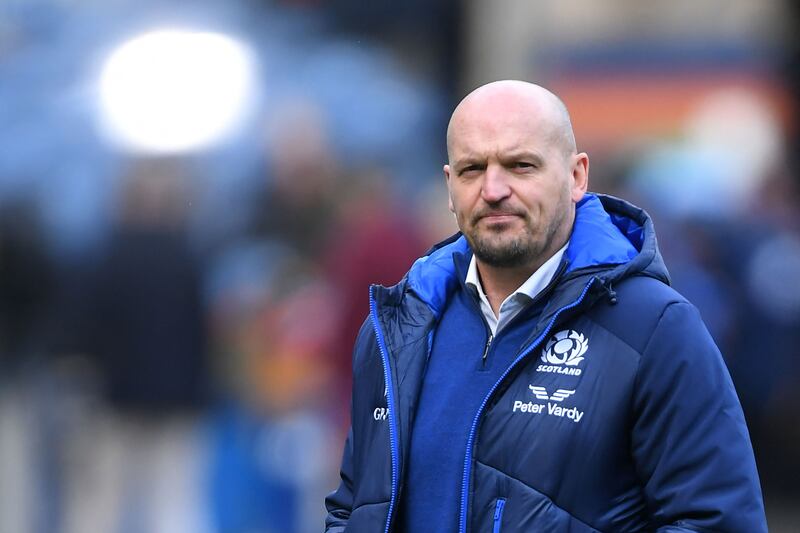The rankings for the world’s top 10 rugby teams didn’t change in the last update by World Rugby on Monday. Ireland are still the number one team. Japan are still 10 and everything in between is as it was.
Of course, the teams were not aligned that way when the Rugby World Cup (RWC) draw was completed in December 2020, its traditional slot after the end-of-year international series of matches.
That season the end-of-year Tests were part of the Autumn Nations Cup. In addition, because of Covid, rescheduled Six Nations matches took place across the final two weekends in October. Ireland beat Italy, Wales and Georgia but lost twice behind closed doors to France in Paris and England at Twickenham.
By the time the World Cup begins on September 8th, when hosts France open in Stade de France against New Zealand, it will be almost three years, or 998 days, since the live draw was made in Paris. For comparison, the final draw for last year’s Fifa World Cup, which began in Qatar in November, was held just six months beforehand, in April at the Exhibition and Convention Centre in Doha, prior to the completion of qualification.
With 20 teams set to compete in France this autumn in four pools of five, the intervening years have not been kind. The draw hasn’t aged well and right now, after changes in the rugby world order, the pools have become horribly skewed.
Imagine a Fifa World Cup with the first-, fourth- and fifth-ranked teams in the world all in the same pool. That’s the lousy look rugby has assumed with Ireland, South Africa and Scotland in RWC Pool B.
The second- and third-ranked teams in the world are also drawn together with both the French and New Zealand competing in Pool A. The top five teams in the world have been bunched into two pools. As things stand, three of the five are certain be knocked out of the competition before the semi-finals.
You could imagine that Gregor Townsend and Scotland would feel especially miffed. Their challenge will be to beat either Ireland or South Africa as well as the other teams in the pool to make it into the knockout phase. And it doesn’t get any better when teams from Pool A and B get to quarterfinals as they face each other – the winner of Pool A plays the runner up in Pool B and the Winner of Pool B faces the runners up in Pool A.

All in all, it is a draw that is destined to end in tears with the top five teams wrestling their way out of the pool stages in Pool A and B only to find another top five team trying to bump them out.
There is, however, an upside – for Wales and England. England, who have fallen to sixth in the world rankings, and Wales who have slipped to ninth, will not be feeling the stress quite so much. If England can top Pool D, where they face Japan, Argentina, Samoa and first-time qualifier Chile, they meet the runner-up in Pool C, which could be Wales.
Australia, Fiji, Georgia and Portugal are the teams Warren Gatland and his team have to deal with for that scenario to unfold. Even if Wales lose to Australia, they should have it in them to beat the other three sides.
Twelve of the 20 teams, including Ireland, qualified automatically for the 2020 draw by finishing in the top three places of their Rugby World Cup 2019 pool.
Due to Covid, those teams were then seeded based on the men’s rankings of January 1st, 2020 and divided into bands of four. The highest ranked team in the world when the draw took place was South Africa. Ireland were fifth. New Zealand were ranked second, England third and Wales fourth, which ensured that they were kept apart.
At that time France, currently second, were ranked seventh in the world, while fifth-placed Scotland, who beat England and Wales this year, were ninth. Argentina, who knocked Ireland out of the competition at the quarter-final stage, when Joe Schmidt was Irish coach in 2015, are ranked eighth now but were 10th for the draw.
What World Rugby didn’t bake into the cake is how world rankings could dramatically change, especially now with rivalry between the top-tier teams more competitive than ever. A gap of almost three years with teams changing form, in transition and rebuilding in a new cycle is much too long.
It is too late now for 2023, but it has been reported that World Rugby realise they have made an error and have recognised that if teams can reshape the rankings map between the draw taking place and the beginning of the tournament, the methodology is no longer fit for purpose.
On the back of that, it has also been reported that the draw for Rugby World Cup 2027 will not, according to the tradition, take place at the end of next year. While it is not yet known when exactly it will take place, it will be closer to the Australia 2027 tournament than Paris 2023. A move in the right direction.






